The Hall of Benevolence and Longevity (Renshoudian) is the most important political structure in the Summer Palace, nestled within its
East Palace Gate. It served as a venue for the emperor to manage state affairs and then also for ceremonies.
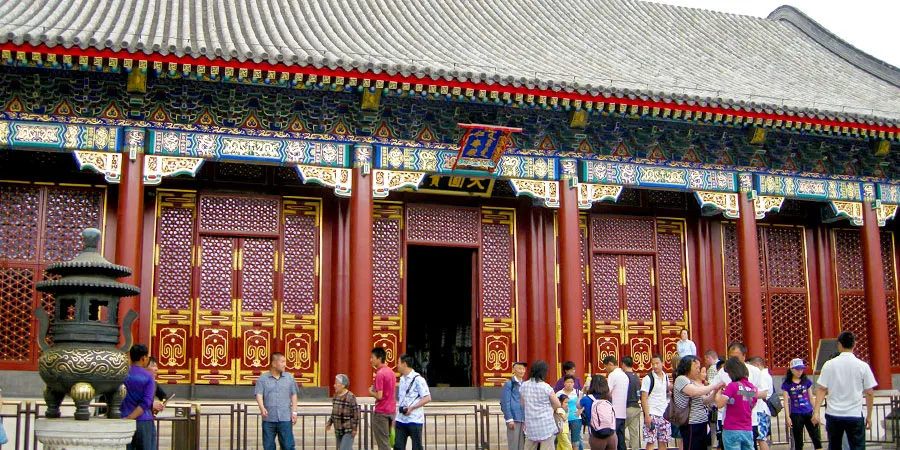 |
| Hall of Benevolence and Longevity |
History
Built in 1750 as emperor’s office, Emperor Qianlong (1711~1799) named it the "Hall of Diligent Governance" (Qinzhengdian), aiming to remind rulers not to neglect state affairs amidst their garden pleasures.
Destroyed by Anglo-French forces in 1860, it was rebuilt and renamed the Hall of Benevolence and Longevity in 1886, symbolizing that benevolent rule leads to longevity. After the reconstruction, both Empress Dowager Cixi (1835~1908) and Emperor Guangxu (1871~1908) would conduct state affairs and meet ministers here.
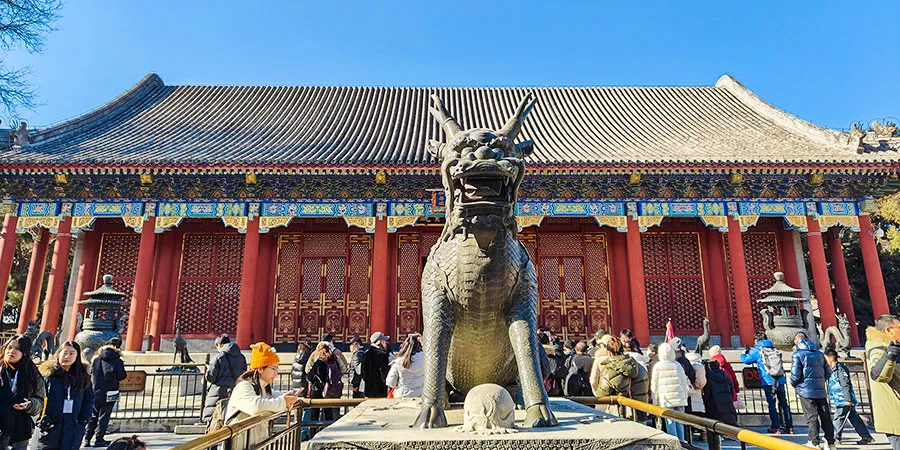 |
| Hall of Benevolence and Longevity |
In addition to politics, the hall also functioned as a ceremonial place after then.
During Cixi’s 70th birthday in 1904, the emperor held a grand celebration for her and invited foreign envoys and their spouses in the hall. They enjoyed banquets, shared gifts, and posed for photos on a boat. The banquet was lavish, consuming an astonishing 17,500 rolls of colorful decorative silk—enough to make nearly 6,000 adult robes.
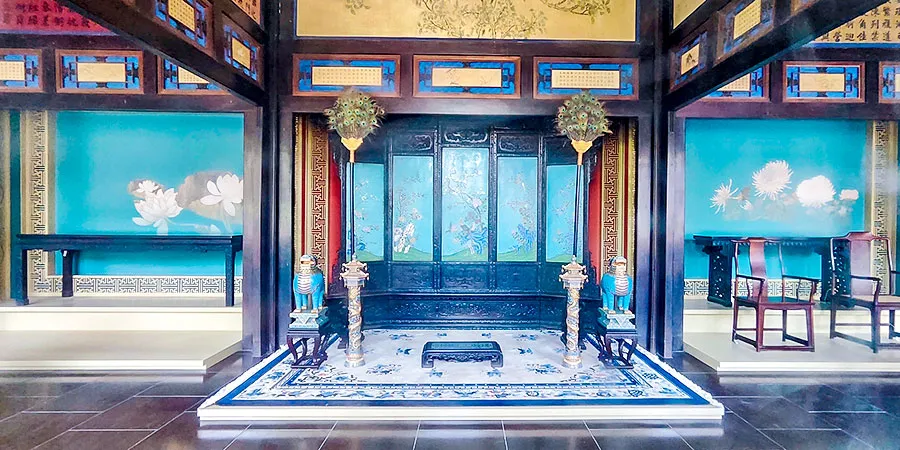 |
| Side Hall Interior |
On October 12th, 1908, the Hall of Benevolence and Longevity witnessed the Qing Court’s last political event, which is Cixi and Guangxu's reception of a British envoy. Then, the Hall of Benevolence and Longevity, along with other buildings in the Summer Palace, fell into silence for years, until 1914, when the Summer Palace were first open to the public, and continue to be a public attraction till now.
What to see about the Hall of Benevolence and Longevity today?
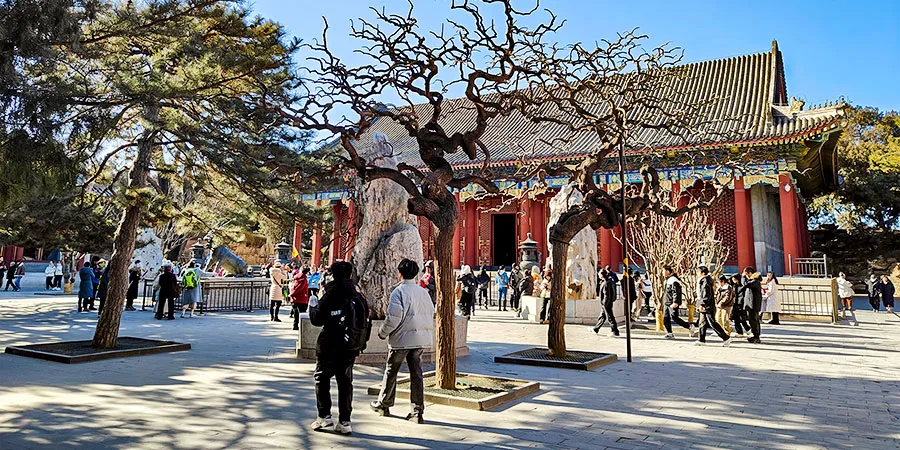 |
| Courtyard of the Benevolence and Longevity Hall |
Today, visitors can explore not only the main Hall of Benevolence and Longevity in its original state, but also its side halls, the Gate of Benevolence and Longevity, Nine Ministers' Rooms, and even its back rockery way, which are together called Hall of Benevolence and Longevity complex, the Summer Palace's political area.
Key Structure: Hall of Benevolence and Longevity
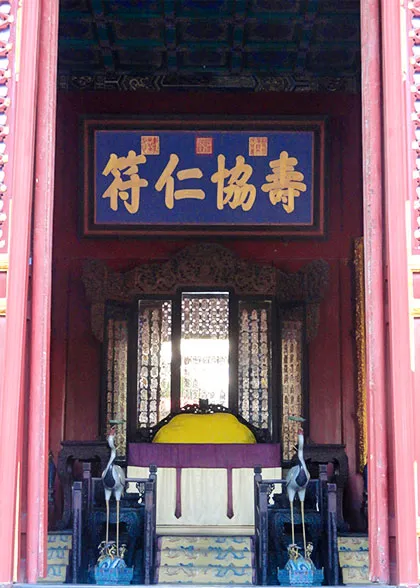 |
| Interior of the Hall |
Perched on a high base of white marble, the east-facing Hall of Benevolence and Longevity is encircled by corridors. Its side halls are covered with grey tiles and adorned with ridge animals. There were once 1,257 items specifically used for decoration in the hall, including wooden furniture, high-quality ancient bronze ware, porcelain, and more.
Inside the Hall of Benevolence and Longevity, longevity (Chinese character "寿") becomes the decorative theme. Two tall banners hang on the walls of the south and north warm cabinets, each bearing a large "寿".
Around and within the spaces of the large character, a total of 100 bats (meaning happiness) in various forms are depicted, symbolizing "hundreds of happiness & longevity". Behind the throne, a screen is carved with over 200 characters of "寿" in different calligraphy styles. There are also 412 patterns of the character "寿" on the eaves tiles around the hall.
In the front courtyard of the main hall, there are some displays not to miss:

Bronze Kylin
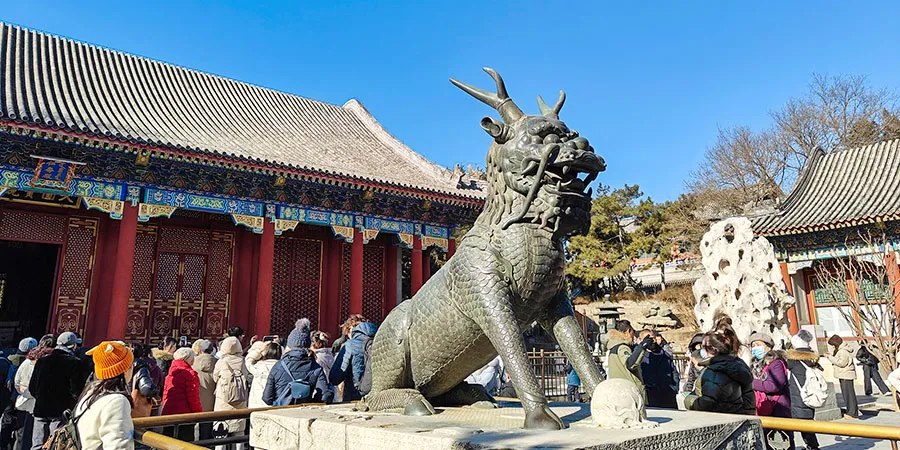 |
| Bronze Kylin in Front of the Hall |
At the front center of the Hall of Benevolence and Longevity stands a tall bronze kylin, a mythical creature combining features of a dragon's head, deer's antlers, a Buddhist bun-like crown, ox hooves, and a lion's tail, symbolizes prosperity and fertility.
Cast in 1741 for the Old Summer Palace, only one of the two kylins survived the 1860 fire, and it was moved to its current location in front of the hall in the Summer Palace in 1937.
In the 20th century, the front legs and horns of the kylin broke off and disappeared, which were then repaired. Visitors can observe the traces of splicing due to the difference in copper content used in the repair.

Incense Burners
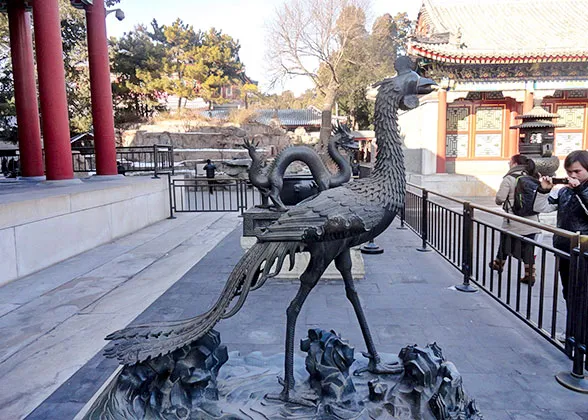 | | Phoenix Burner | | 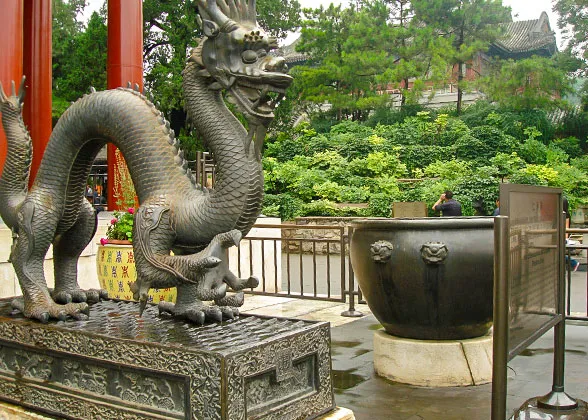 | | Dragon Burner | |
Behind the kylin are hollow bronze phoenix and dragon incense burners. During grand ceremonies, sandalwood was lit within, expiring swirling blue smoke and enchanting fragrances, while the nearby tripod-style incense burners were used for daily court sessions.
Traditionally, the dragon represented the emperor and occupied the central position, with the phoenix, symbolizing the empress, placed beside it. However, under Empress Dowager Cixi's reign, she reversed their positions, placing the phoenix above the dragon as a symbol of her authority.

Bronze Vats
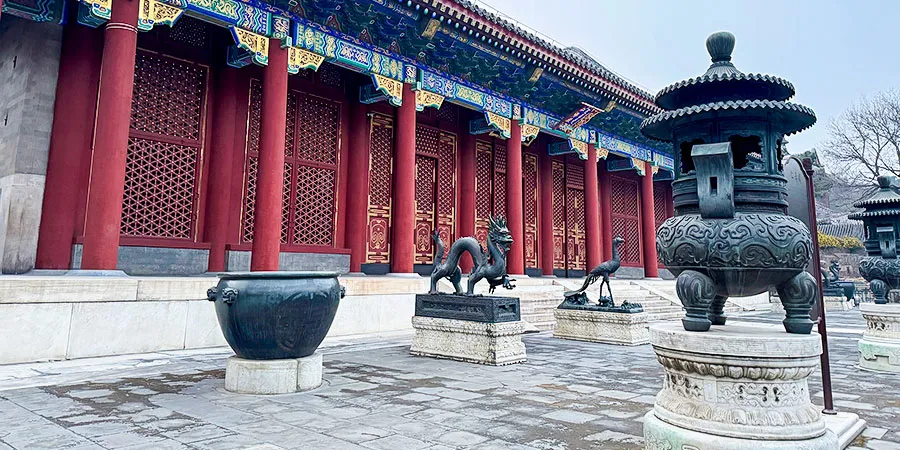 |
| Front Display of the Hall |
Next to the incense burners are bronze vats, once filled with water for fire prevention. Each vat sits on a marble pedestal with a manually operable stone door at the bottom for placing charcoal to prevent freezing in winter.
Gate of Benevolence and Longevity
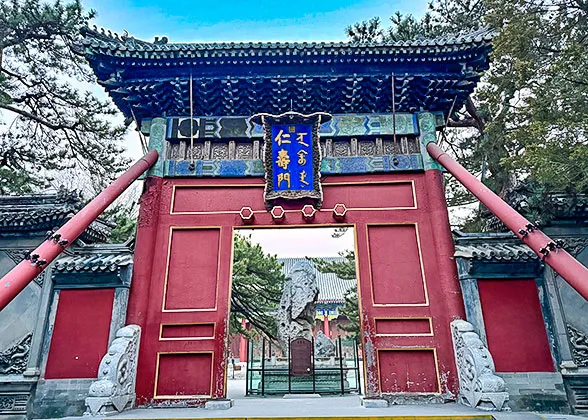 | | Gate of Benevolence and Longevity | | 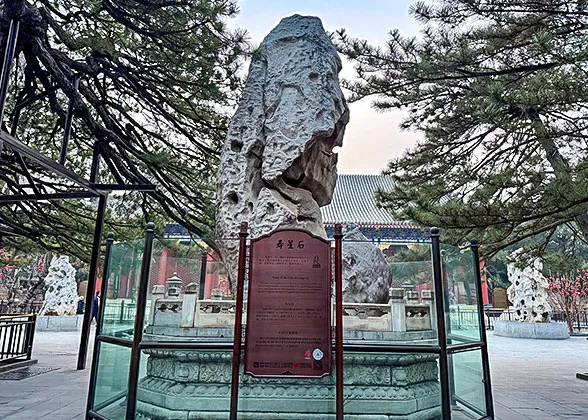 | | Longevity Deity Rock | |
The Gate of Benevolence and Longevity (Renshoumen) is the main hall's entrance, flanked by ancient cypress trees. This splendid gatehouse is adorned with double-layered painted crossbeams, pillars, and carved wooden panels.
It allowed imperial carriages direct access, while officials would tidy up their appearance upon entering, hence its nick name the Ceremonial Gate.
On both sides of the gate are brick-carved screen walls, depicted with a dragon teaching its young, with a pearl in the center as the teaching tool.
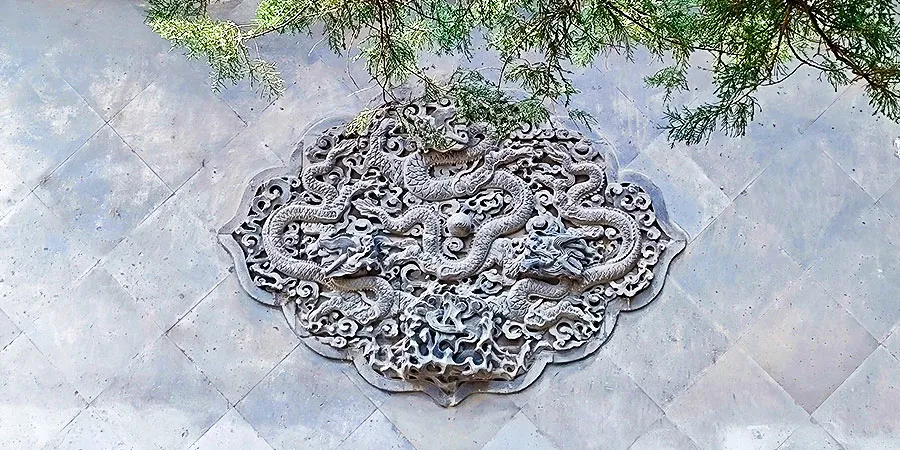 |
| Side Screen Wall of the Gate |
In front of the gate are Taihu lake stones (a kind of a rock known for multihole shape), resembling a pig on the north side and a monkey on the south. Inside stands a screen rock resembling an old longevity deity, known as the "Longevity Deity Rock" (Shouxingshi).
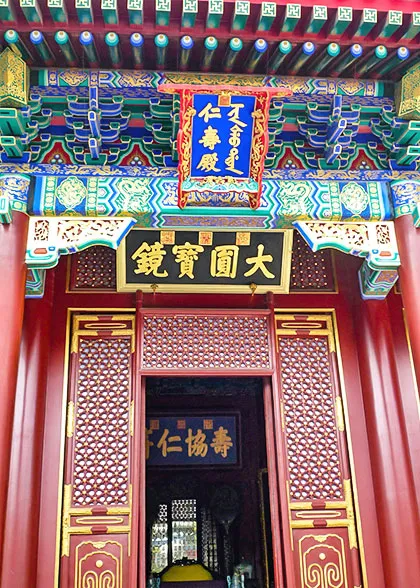 |
| Plaques of the Hall |
Outside the Gate of Benevolence and Longevity, there are nine rooms on each side, where main ministers of the Qing Dynasty took turns on duty, giving them the name "Nine Ministers' Rooms" (Jiuqingfang). Currently, the southern rooms have been transformed into a café.
Upon Leaving: Rockery Passage behind the Main Hall
Exiting the Hall of Benevolence and Longevity, visitors step into a winding, secluded passage bridging the Summer Palace's court and garden areas, through the rockeries as a royal boundary.
Starting from the steps behind the hall, it leads to the through door of east chamber of the Hall of jade Ripples. Visitors may still feel enclosed when they reach this point. Just a few steps south, however, reveals an amazing view of Kunming Lake's misty expanse, perfectly encapsulating the ancient Chinese architectural wisdom of "suppressing before exalting".
 Next: Garden of Virtue and Harmony
Next: Garden of Virtue and Harmony
 Related Link: Summer Palace Travel Tips
Related Link: Summer Palace Travel Tips
- Last updated on Oct. 09, 2025 by Jally Zhang -









![]() Next: Garden of Virtue and Harmony
Next: Garden of Virtue and Harmony ![]() Related Link: Summer Palace Travel Tips
Related Link: Summer Palace Travel Tips


